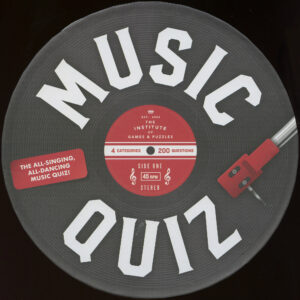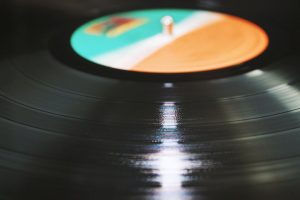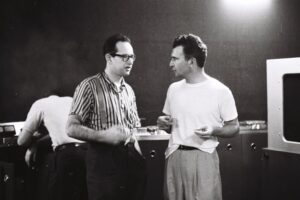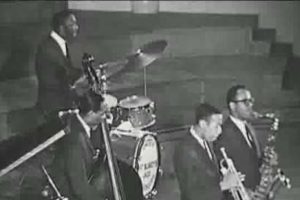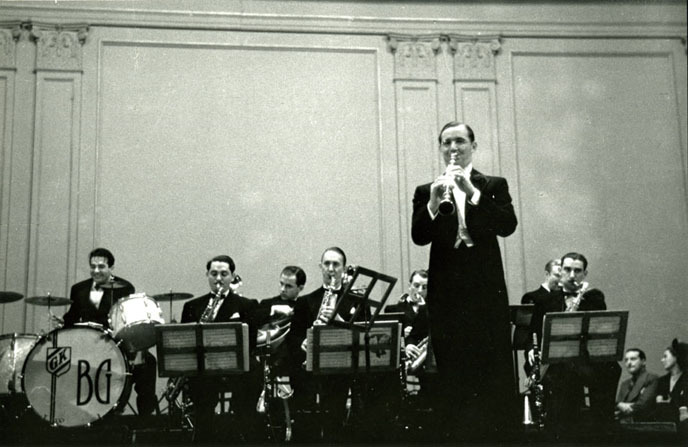
Next week will mark the 80th anniversary of the day that jazz came in from the cold.
On January 16, 1938, Benny Goodman brought jazz to Carnegie Hall in New York City. History.com has a nice backgrounder on the event.
Benny Goodman –The King of Swing – already was a big star. The idea of playing Carnegie Hall was suggested to him by his publicist and laughed off. Goodman gradually took it more seriously and finally decided to do it. He then “threw himself into the task with characteristic passion,” the article says.
Names still recognized today, such as Harry James, Lionel Hampton and Gene Krupa, were Goodman band members. Goodman obviously knew the importance of the undertaking and supplemented both his band and set list (as we call it now). He added a piece called “Twenty Years of Jazz” and an extended jam and personnel from Duke Ellington and Count Basie’s orchestras.
The list of musicians who were invited to augment the Goodman orchestra was more or less an all-star team of jazz musicians: Buck Clayton, Bobby Hackett, Cootie Williams, Harry Carney, Johnny Hodges, Lester Young, Freddie Green and Walter Page.
The story says that the acetate recordings of the concert were found by Goodman’s sister-in-law while playing hide-and-seek in the family home in 1950 (though the story may not be true). Wikipedia traces the influential releases of the recordings. The 1950 release was the first double album and one of the first using the long playing (LP) format. It was one of the first to sell more than a million copies.
In 1999, a CD version was issued to positive reviews. One of the key individuals in the effort was Phil Schaap, who is a fixture in the New York City jazz community through his “Bird Flight” program on WKCR, the radio station of Columbia University.

The Web makes it possible to get as deeply enmeshed in major cultural events as one cares to be. For those who want to take a deep dive, I recommend this post by Eric Bogart and a review by John Robert Brown of Jon Hancock’s book “Benny Goodman: The Famous Carnegie Hall Jazz Concert.” (The review initially was posted at “Jazz Journal” in 2009.) Hancock, by the way, is credited with the newsreel footage in the video above.
The importance of certain events gets lost in the mists of time. There was a time when jazz was considered edgy and a bit dark. It was the music of the night. And, of course, the biggest names were African-American. Thus, presenting the best of the best in the citadel of classical (and thus respectable) music was a landmark that shouldn’t be forgotten. And, apparently, the players took advantage of the opportunity and presented a superlative show.
We all were born after jazz had taken its place as a classy and intellectual genre. It’s important to remember that barely one lifetime ago jazz was an outsider. This is a path that all music and art travel. Rock started as a bunch of long-haired sweaty kids banging on instruments. It became, over time, an accepted form of music often played by men and women of true genius.
There is, however, no definitive point at which rock became accepted. Perhaps The Beatles’ appearance on The Ed Sullivan Show and Woodstock are the closest comparisons, but the media had changed so much and so quickly that a true comparison is not possible. For jazz, however, there is a definitive moment of validation: On January 16, 1938 jazz was “officially” designated to be a classy form of music.

